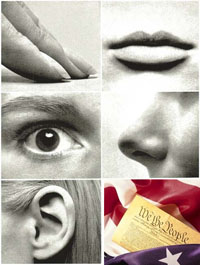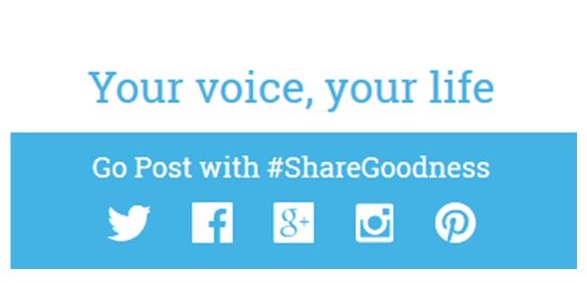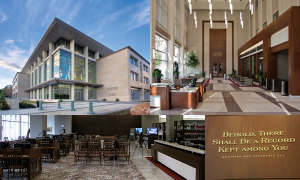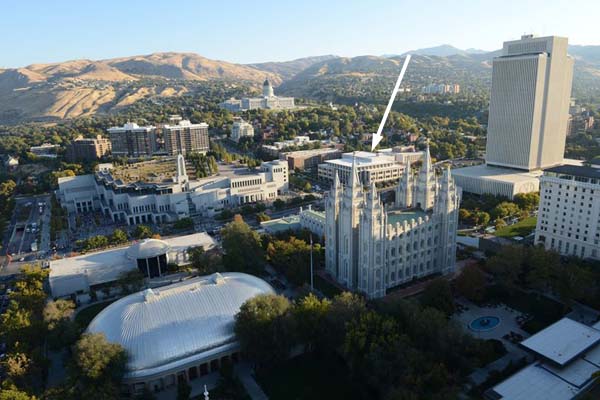 The word history refers to three different but related things–to the past, to the stories people tell about the past, and to the formal inquiry into the past and its stories.
The word history refers to three different but related things–to the past, to the stories people tell about the past, and to the formal inquiry into the past and its stories.
In my mind, the best evocations of history are sensible–they are:
- clear and rational (they “make sense”),
- wise and practical (“common sense”), and
- perceptible to the senses (sensory and experiential).
Everybody does not share the same past or even appreciate the same stories, but everybody can and must take part in the process of asking—and learning—about history.
History matters today more than ever. It is popular–Americans purchase historical books and movie tickets, visit historic sites and museums, commemorate anniversaries and historic places, save old buildings and family heirlooms, and research genealogy and local history. It is polemical–commemorations prompt both reflection and protests, curriculum debates spur both devotion and death threats, and historically themed amusement parks draw both acclaim and ire.
All history is public history because, beyond filling course requirements, beyond teaching critical thinking, beyond preparing people for civic engagement, history possesses the power to whisper life, feeling, and meaning into the present human experience. Because the past can be everybody’s subject of inquiry, everybody’s history matters.
The El Paso Inc. newspaper awarded its 2014 Community Spirit Award to UTEP’s Centennial Celebration. The celebration was intentionally designed to involve as many people as possible and the announcement cites 175 official events–and many more unofficial–that drew hundreds of thousands of participants, tens of thousands for some of the larger single events. On one day in October UTEP representatives visited every school in the city–more than 180,000 students–with a message to prepare for college. “You only get to celebrate a centennial once,” the announcement noted, “so you want to get it right, and by all accounts the organizers did.”
Read the full announcement at http://www.elpasoinc.com/news/local_news/article_a0f422b4-8f78-11e4-822d-232c17e5a2cd.html. See photos of the award ceremony at http://www.elpasoinc.com/news/el_pasoan_of_year/article_c35f2d56-b072-11e4-858e-d7124529b0e1.html.
[Note: Since 2012 I have been working with the American Historical Association to improve history teaching and learning at the undergraduate and graduate levels. As part of that initiative, I was invited to speak at the AHA’s annual meeting in New York City on January 5, 2015. This as a summary of my remarks and comments on that occasion.]
Today we have gathered to ask the question “What’s the Problem with Teaching?” For fourteen years, I taught history at three universities in every rank–from visiting to tenure-track to tenured–and at every level from undergraduate to doctoral. Last June I became the director of the LDS Church History Library and transitioned from encouraging students to go to an archive to overseeing those who help them when they arrive.
The archive is central to what historians do and to how we talk about what we do, from the 19th-century origins of our profession in the work of Ranke and his students to this very conference that seeks to re-connect history with related disciplines. So, where is the archive in our teaching? In an article published in the Journal of American History in 2011, I argued that teaching about historical thinking needs to occur in the places where historians think–one of which is the archive. I argued that such teaching was possible, shared successful examples of past archivally-placed teaching, and sketched out what such teaching might look like in the 21st century.
But now I sit on the other side of the reference desk. Instead of sending students merrily off to the archive, my team waits for them to arrive. Would you like to know how your students fare? Most show up having read some literature and with a topic or question in mind that shows some signs of having been narrowed. Good work. But very few of ours students know how to move from topic to answers. Here are some of the questions we might help them consider: What kinds of sources might answer my question? Where might those sources be today? Who might know about those sources and collections? How is a library catalog more powerful than Google? What is not in the catalog or online? Once we get them asking these questions we must prepare them for answers both expected and surprising–sometimes there are many sources, sometimes none; sometimes the sources are in one repository, most often they are in many, sometimes they are in very unlikely places; library catalogs do (!) know more than Google, but less than finding aids and the humans who produced both.
Therefore, I invite you to consider not just what students should do when they encounter a primary source in your classroom, but how to imagine that a source might exist somewhere and then how to go and find it in archive. If the archive is central to our work as historians, but has no place in our teaching, then are we really teaching our students to do history?
The AHA Program Committee has scheduled this session for:
Monday, January 5, 2015: 11:00 AM-1:00 PM | New York Hilton, Sutton North
272. What’s the Problem? Turning Teaching Questions into Scholarship of Teaching and Learning Research
Co-Sponsor(s): AHA Teaching Division
Chair: Laura M. Westhoff, University of Missouri–St. Louis
Lendol G. Calder, Augustana College
Keith A. Erekson, University of Texas at El Paso/LDS Church History Library
David P. Jaffee, Bard Graduate Center
Leah Shopkow, Indiana University Bloomington
@KeithAErekson asks if we are really teaching students to do history if we aren’t including archives in our teaching #aha2015
— Clio (@thecliodotcom) January 5, 2015
[Note: After Elder David A. Bednar invited Latter-day Saints to use social media more effectively, our local Sunday School began a weekly how-to class. I have been assigned to teach the course’s final lesson on December 28, 2014, and have placed the materials for the lesson on this Pinterest board. The pins are numbered on the board and identified below in parens ( ) .]
Get Started
- On (1) lds.org, in the blue footer at the bottom, click on (2) “All Church Social Pages” – a new page will open with information about each of the channels and a list of Church hashtags
- It is interesting to see how marketers compare the channels
2. Create an Account on the Channel(s) of your Choice
- On a computer, type the channel’s URL in browser (Facebook.com, Twitter.com and so on)
- Or, on a mobile device, find the app by typing the URL in a browser or through your device’s “store” (App Store on Apple, Play Store on Android)
- Follow the instructions to create an account, which will typically involve providing an email address (or another social media account) before creating a username and password
Be . . . Yourself | Positive | Law-Abiding | Aware | Flexible | Curious | Fearless
Follow and Share
3. Follow Church Accounts with Your Account(s)
- On (1) lds.org, in the blue footer, click the social media icons to find the Church’s official accounts
- On (1) lds.org, in the blue footer, click on (2) “All Church Social Pages” and then on the channel of your choice to find more accounts to follow
4. Share Church-Produced Content through Your Account(s)
- To share anything from (1) lds.org, click on it. When the item opens then click one of the social media icons that appear on the page or in the video viewer frame or on an images when you hover over it. (For Facebook, you can always just copy/paste the URL of a page and share in your status update or message.)
- Use a hashtag in (find a list at the bottom of (2) “All Church Social Pages”)
- There is also a page with (3) “Inspirational Picture Quotes“
- Visit (4) social.lds.org for ideas and examples of how to share
Go Mobile
5. Use Church Apps on your Mobile Device(s)
- On (1) lds.org, in the top right corner, click on “Sign in/Tools” to create an lds account (requires membership record number; you will create your own username and password)
- On (1) lds.org, in the blue footer, click an app icon or on (5) “All Church Mobile Apps” to be taken to an information page
- Or, find the apps in your device’s store (App Store on Apple, Play Store on Android)
- After the app is installed on your device, the first time you click on it you will be asked for your lds account information
6. Share Content Directly from the Church Apps
- LDS Tools – send an email or text to a list
- LDS Gospel Library – share publications, videos, images
- Mormon Channel – share videos and messages
- FamilySearch Tree – view and share information from your tree
- FamilySearch Memories – create and link photos and video
Tip: The sharing icons may look different or appear in different places depending on the app. If you are on Android, look for “share” in the menu. Be curious.
Create
7. Create Content for Others to Share
- Visit (6) create.lds.org to submit your own photos, music, or videos for others to share
Links
(2) https://www.lds.org/media-library/social
(3) https://www.lds.org/media-library/images/categories/inspirational-picture-quotes
(5) https://www.lds.org/pages/mobileapps
(This page) https://www.keitherekson.com/2014/12/share-goodness/
Follow Keith’s board #ShareGoodness on Pinterest.
Click on the image below or visit pinterest.com/KeithErekson/sharegoodness/ to see the Pinterest board.

 I have accepted the invitation to serve as the director of the Church History Library of The Church of Jesus Christ of Latter-day Saints. In this role, I look forward to sharing the Church’s history with its more than 15 million members, more than 5 million annual visitors to Temple Square, and many other interested researchers and other institutions. I take with me a profound sense of gratitude for the ways that UTEP’s traditions of opportunity and believing in dreams have transformed my life through the privilege of teaching UTEP students, serving El Paso teachers, and commemorating the history and accomplishments shared by the University and city.
I have accepted the invitation to serve as the director of the Church History Library of The Church of Jesus Christ of Latter-day Saints. In this role, I look forward to sharing the Church’s history with its more than 15 million members, more than 5 million annual visitors to Temple Square, and many other interested researchers and other institutions. I take with me a profound sense of gratitude for the ways that UTEP’s traditions of opportunity and believing in dreams have transformed my life through the privilege of teaching UTEP students, serving El Paso teachers, and commemorating the history and accomplishments shared by the University and city.
About the Church History Library
The Church History Library is dedicated to preserving and sharing the history of The Church of Jesus Christ of Latter-day Saints, the fourth largest Christian church in America. The library opened in June 2009 and has since welcomed thousands of people interested in learning more about the history of the faith and its members. The 230,000-square-foot facility contains five floors that include a public library and reading room and storage space for thousands of books, pamphlets, unpublished records, patriarchal blessings for Church members, photographs, and audio and video recordings.

The Church History Library is located at Temple Square in Salt Lake City, Utah–east of the Conference Center, north of the Church Office Building, and down the hill from the Utah State Capitol.
Links
LDS Church History Library
https://history.lds.org/section/library [website]
http://churchhistorylibrary.lds.org [catalog]
http://www.mormonnewsroom.org/article/church-history-library [about]
The Church of Jesus Christ of Latter-day Saints
https://www.lds.org
Frequently Asked Questions about Mormonism
http://www.mormonnewsroom.org/article/mormonism-101
UTEP Media Releases
Center Announces Interim Director (April 25, 2014)
Centennial Museum Director to Lead UTEP’s Centennial Celebration (April 1, 2014)
Tags
Access Policy Analogies Angel Moroni Archives & libraries Awards Black history Careers in History Church History Library Church History Speaking Church Magazines Come Follow Me Commemoration Conspiracy Theories Contingent Citizens Databases Elvis Presley Forgery Everybody's History Family History & Genealogy First Vision Foundations of Faith Genealogy Speaking History Skills History teaching & learning Hoaxes and History 2019 How History Works In the Church News Kirtland Temple Lincoln Making Sense of Your Patriarchal Blessing Mormon studies Mormon Women's History Mother's Day Patriarchal Blessings Pioneers Politics Primary sources Questions and Answers RealvsRumor Saints Saints (narrative history) Sensible History Stories Texas social studies UTEP Centennial WitnessesDisclaimer
The views expressed here are the opinions of Keith A. Erekson and do not necessarily reflect the views of the Church History Department or The Church of Jesus Christ of Latter-day Saints.


